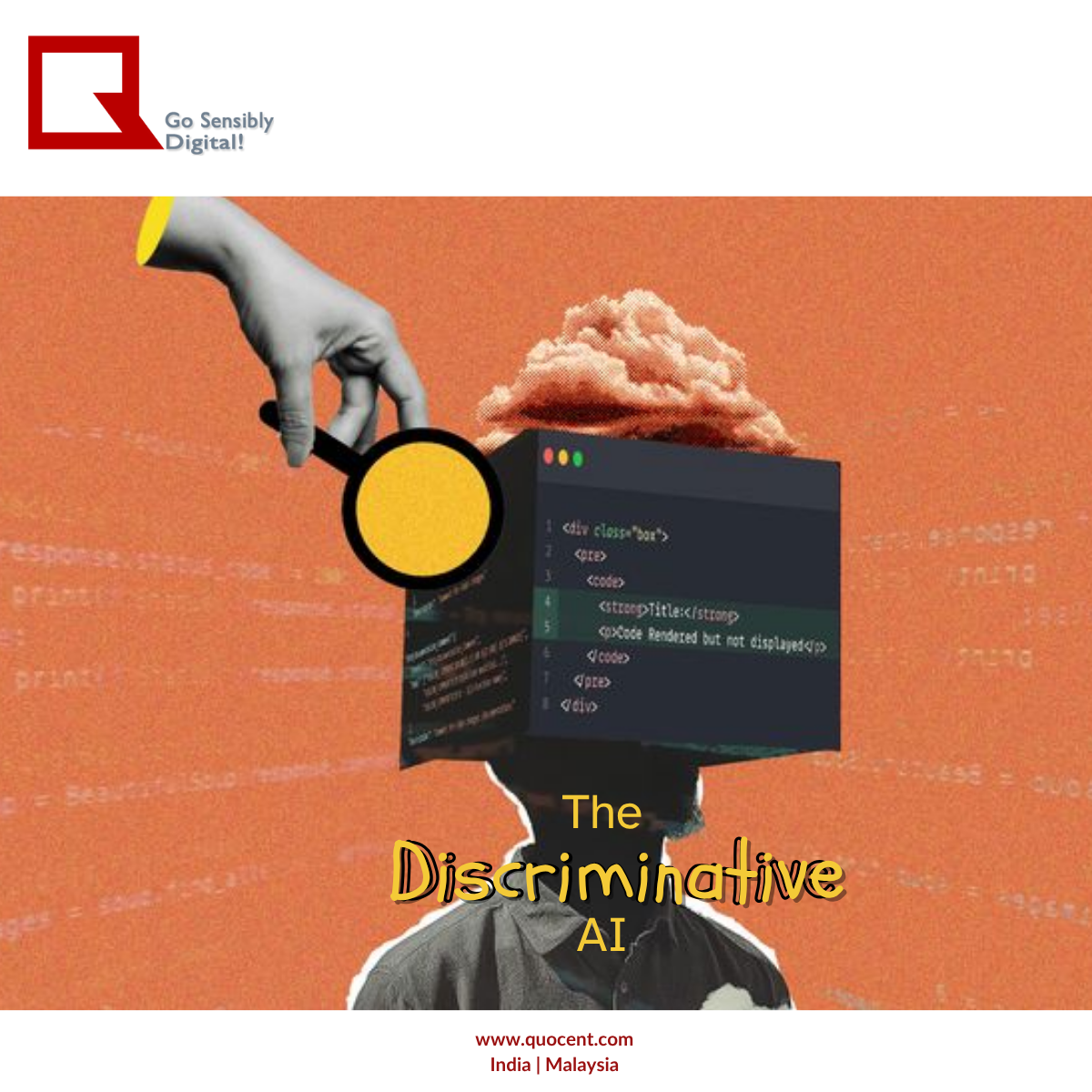If you’ve ever opened your inbox and found spam emails tucked neatly away from your main messages, or if your bank suddenly paused a transaction to check if it was really you swiping your card halfway across the world—thank Discriminative AI. Unlike its cousin, Generative AI (which creates content), Discriminative AI is more about decisions. It classifies things, predicts outcomes, and draws boundaries between categories. Basically, it judges—quickly and at scale.
You’ve seen it in action even if you didn’t notice. Online shopping platforms use it to recommend what to buy next by predicting your preferences. Banks use it to flag fraud. Hospitals use it to prioritise which patients might need urgent care. HR departments lean on it to filter through piles of job applications. It’s everywhere, making quick calls based on patterns in data.
But while it’s helping us sort, save, and streamline, Discriminative AI has a darker side that isn’t always obvious.
Let’s take hiring tools, for example. Imagine an AI trained on ten years of resumes from a tech company that, for whatever reason, had mostly male hires. Without intending to, the AI might learn to favor resumes that look like past ones—male names, certain schools, certain phrases. So when a perfectly qualified woman applies, she might be silently filtered out. It’s not just unfair—it’s illegal in many places. The worst part? The largly happens due to lack of anthropomorphisation of the systems..
Then there’s the case of predictive policing. Some cities used AI to predict where crimes were more likely to happen and deploy resources accordingly. But the model was trained on past crime data—which already had biases due to over-policing in certain neighbourhoods. As a result, the AI simply reinforced those biases, sending more patrols to the same areas and neglecting others. The AI didn’t detect crime as it detected patterns in past policing which is a result of biased training data.
Transparency is another big hurdle. Many discriminative models act like black boxes—you put in data, they spit out a result, but try asking why a certain decision was made and you might get silence. That’s dangerous when someone is denied a loan, rejected for a job, or put under increased surveillance.
Even if you get everything right in the beginning, things can go wrong fast. Over time, models can become outdated, relying on trends that no longer apply. For example, during the early stages of COVID-19, financial habits changed drastically. Models that flagged certain spending as suspicious had to be reimagined to a certain extent. If they weren’t updated, they flagged normal behaviour as fraudulent, causing unnecessary panic.
So, how do we fix it? How do we use this powerful technology while avoiding these traps?
Start with your data. Make sure it’s diverse, balanced, and reflects the real world—not just your past records. That means going beyond what’s easy to collect and thinking hard about what’s fair. Regular audits should become routine. Don’t wait for the model to misbehave before you check its output. Challenge it regularly with real-world, messy data.
Design your systems to explain themselves. If an AI makes a decision, someone should be able to trace back and understand why. That helps build trust—and lets you correct things early. Security matters too. These systems can be tricked, often in very clever ways. Build in protections, especially when you’re working with sensitive data.
And perhaps most importantly, involve people. Real people. Don’t just let the data scientists work in isolation. Include legal teams, ethicists, users, and community voices. Let those who are impacted by the AI have a say in how it’s developed and deployed.
Discriminative AI can be an incredible tool for efficiency, accuracy, and speed. But left unchecked, it becomes an engine of silent bias, opaque decisions, and harmful outcomes. Risk mitigation isn’t a “nice-to-have”—it’s essential. The key lies not in more powerful AI, but in more thoughtful, inclusive, and transparent use of it.
So next time you rely on a machine to help make a decision, ask yourself—do you know what it’s basing that decision on? If not, it might be time to look under the hood.
At Quocent, we always try to implement risk mitigations of the latest tools to enhance better service delivery for our customers.
Connect with us today!



